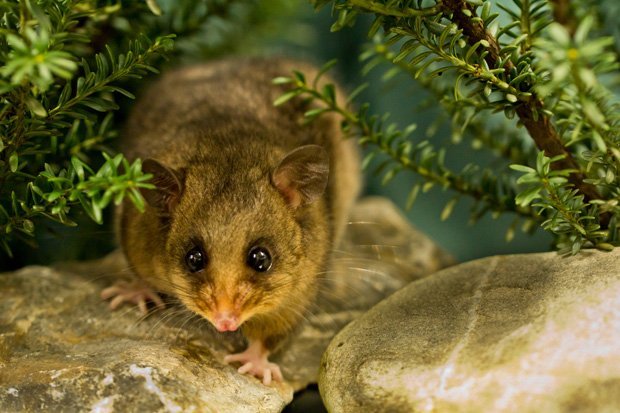The endangered animals of the Aussie Alps

AT VICTORIA’S HEALESVILLE SANCTUARY – a 30ha wildlife park about an hour’s drive north-east of Melbourne – five small critters have a stronghold in the simulated alpine habitats that are now their home.
It’s here, in mirco-habitats that replicate parts of the Australian Alps, that mountain pygmy possums, northern and southern corroboree frogs, and two types of alpine skink (Guthega and alpine she-oak) are being bred to act as lifelines for their species.
Habitat damage has been caused by the development of ski resorts, the construction of roads and the impact of feral species in the Australian Alps, says Dr Melanie Lancaster, threatened species curator at Healesville Sanctuary.
Climate change could also lead to an increased risk of extreme weather events, higher rates of predation and increased competition from other species, says Melanie.
“If warming occurs, then species that live at lower altitudes will make their way up the mountains and be in direct competition with these highly specialised alpine species for both habitat and resources.”
Captive breeding for endangered species
As a result, the team at Healesville Sanctuary set up captive-breeding programs for fragile critters, as part of Zoos Victoria’s commitment to fighting extinction in south-eastern Australia.
In total, Zoos Victoria has identified 20 species for conservation and Healesville Sanctuary has developed programs for 10 of them.
“We’ve got our programs for the five alpine species,” says Melanie. “We’ve also got breeding programs for Tasmanian devils, Leadbeater’s possums, spotted tree frogs and two bird species: orange-bellied parrots and helmeted honeyeaters.”
Most of these creatures are being bred for release, in order to boost wild numbers. Some, such as the Tasmanian devil, will be bred as an insurance population, so healthy animals can be released once conditions in the wild become more stable.
Others, such as the two species of alpine skink, are being bred so researchers can build their knowledge-base about the species’ reproductive behaviours.
“The alpine skinks are quite susceptible to local extinction through big catastrophic events, such as wildfires,” says Melanie. “The main aim of the program at Healesville is to try to learn as much as we can about their breeding biology so that if we need to intervene in the future, we will basically already have the recipe for captive breeding.”
Emergency plan for endangered alpine species
To set up conservation programs for the alpine skinks, the staff at Healesville teamed up with researchers from the Department of Sustainability and Environment (DSE) and Monash University.
“Alpine animals can be quite difficult to keep and breed in captivity, so we wanted to make sure we had our skills and protocols already well-sorted before we were facing a catastrophe,” says Nick Clemann, a senior scientist with DSE and one of the project’s founders.
Local businesses and conservation groups are also getting involved in habitat restoration at Mt Buller, in the Victorian high country. Melanie hopes this will give the local mountain pygmy possums a better chance of survival. “They’ve done a really good job in restoring a lot of the alpine habitat. They’ve restored a lot of the vegetation and reconstructed boulder fields,” she says.
Genetic diversity essential to endangered species’ survival
Between 1996 and 2010, mountain pygmy possum numbers at Mt Buller dropped from 300 to only 30. Without Healesville Sanctuary’s captive-breeding program, the population would not be able to survive.
“There was a huge decline in numbers and with that, a huge decline in genetic diversity in that population,” says Melanie. She and her team are introducing genes from individuals at nearby Mt Hotham to ensure the Mt Buller population remains genetically viable. “It’s quite a new and bold approach to conservation,” she says.
Another serious case tackled in the Sanctuary are tiny corroboree frogs consisting of two species with only about 100 southern corroboree frogs and 1000 northern corroboree frogs left in the wild. Both species are reliant upon the regular release of eggs bred at Healesville Sanctuary to sustain their numbers.
The programs at Healesville are providing hope for Australia’s endangered species. The longest-running of them all has resulted in helmeted honeyeaters being released into the wild each year since 1989.
Recently, while restoring habitat for the birds, Melanie and her team witnessed the difference the program has made first-hand. “We were on our hands and knees planting trees, and we actually saw some helmeted honeyeaters,” she says. “You can see them in captivity and that’s great, but to actually go out and see them in the wild was pretty special.”
RELATED STORIES

